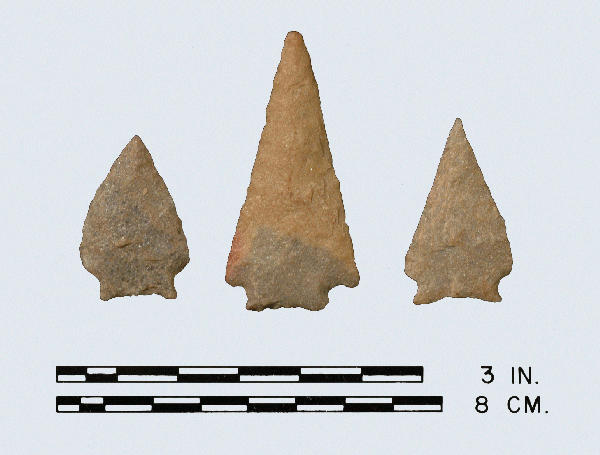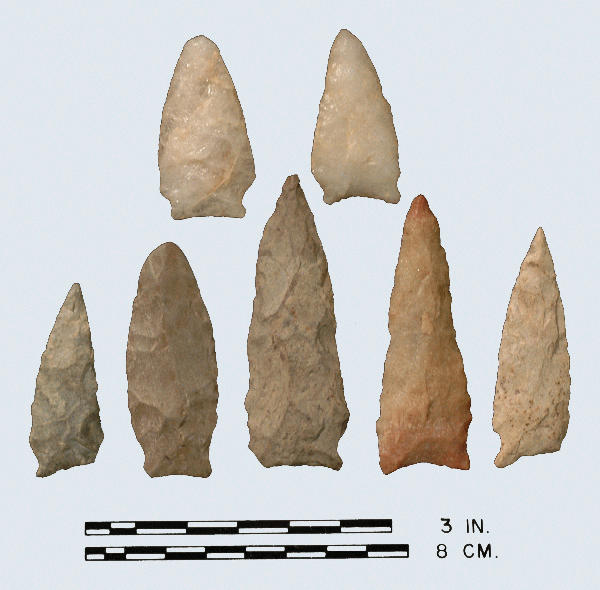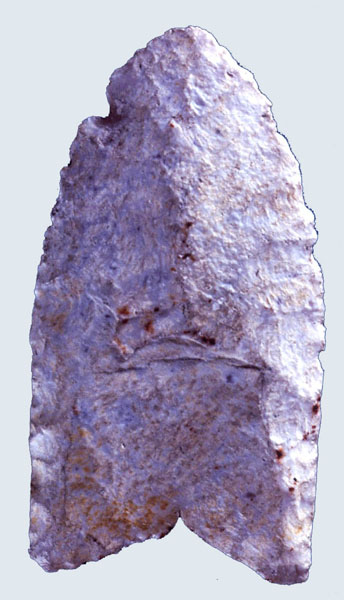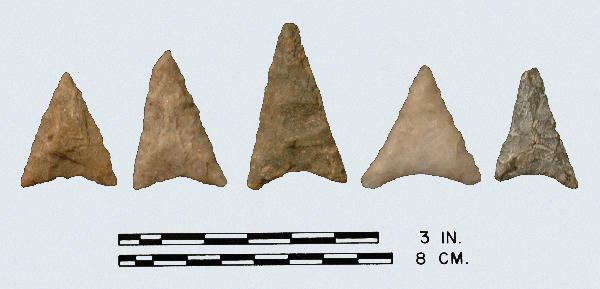
Potts: all quartzite.

Yadkin Eared: Top Row: all quartz; Bottom Row: tuff, tuff, rhyolite, quartzite, rhyolite.
Type Corner Notched Middle Woodland
Defining Attributes
The Potts is a small triangular shaped, finely flaked, corner notched point with a slightly concave base.
Chronology
The Potts point dates to the Middle Woodland period, 500 to 1000 CE. Walselkov (1982) found similar points at the White oak Point Site associated with Mockley and Nomini Ceramic wares in components radiocarbon dated to 860 +/-60 and 880 +/-60 CE.
Description
- Blade: The blade is triangular, the widest part of the blade is just below the corner notches.
- Base: The base is straight to slightly concave, and is always nicely thinned for hafting. Some of the basal edges reveal smoothing. Notches are elongated and shallow, and often pressured flaked.
- Size: Length ranges from 25 to 45 mm. long. Width ranges from 20 to 30 mm. Thickness ranges from 4 to 6 mm, a rather thin point.
- Technique of manufacture: Pressure flaking from small flakes
Discussion
The Potts point is very similar to the eared Yadkin described by Coe from examples found at the Doerschuk Site in North Carolina. Egloff (1988) described a variant of the Potts point from the Croaker Landing Site along the York River in Virginia that he referred to as side notched. Waselkov (1982) also identified a type similar to the Potts point which he called Nomini side notched. In general, small triangular points that are corner to side notched occur during the late Middle Woodland Period. Potts points are very common in the Coastal Plain of Virginia.
Defined in Literature
McCary described the Potts point from his work at the Potts Site along the Chickahominy River in Virginia. However, he didn’t formally define the type.
References



